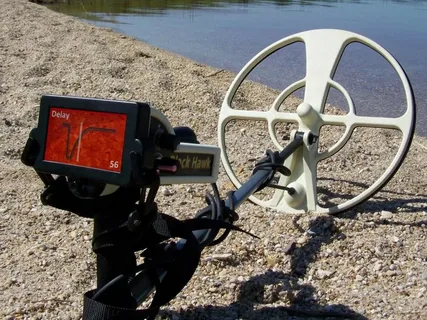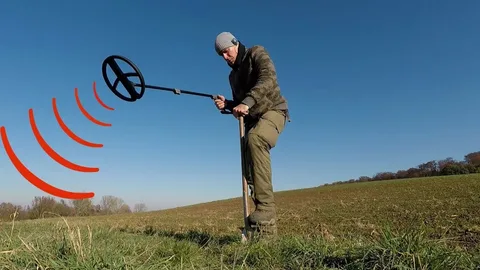The US gold mining industry continues to thrive despite facing various challenges. With a rich history dating back to the 1800s, the US has been a significant player in the global gold mining sector. Despite environmental regulations, labor issues, and fluctuating gold prices, the industry has shown resilience and continues to be a significant contributor to the country’s economy. The US gold mining industry has adapted to a changing landscape and remains an essential part of the nation’s mining sector.
The US gold mining industry has been able to thrive despite facing several challenges. In recent years, the industry has seen an increase in gold prices, which has provided a significant boost to production and profitability for mining companies. Additionally, advancements in technology have allowed for more efficient and environmentally responsible mining practices.
Furthermore, the US has some of the largest gold reserves in the world, making it an attractive location for mining operations. This, coupled with a strong regulatory framework and infrastructure, has contributed to the industry’s resilience.
However, the industry still faces challenges such as environmental concerns, permitting delays, and community opposition to mining projects. Finding a balance between economic development and environmental conservation remains a key issue for the industry.
Overall, the US gold mining industry’s ability to adapt to challenges and take advantage of opportunities has allowed it to continue thriving in a competitive global market.
The History of US Gold Mining: From Discovery to Boom

The history of US gold mining dates back to the early 19th century, when gold was first discovered in North Carolina in 1799. This discovery sparked the country’s first gold rush, as prospectors flocked to the region in search of their fortune.
The California Gold Rush of 1848-1855 is perhaps the most well-known event in US gold mining history, attracting hundreds of thousands of people to the West Coast in search of gold. This rush led to the rapid expansion and development of the western United States.
Following the California Gold Rush, gold mining continued to play a significant role in the country’s economy, with major discoveries in states such as Colorado, Alaska, and Nevada. In fact, Nevada’s Comstock Lode produced over $300 million worth of gold and silver ore in the late 19th century, making it one of the richest mining districts in the world at the time.
Today, the US remains a major player in the global gold mining industry, with large-scale operations in states such as Nevada, Alaska, and Colorado. The development of new mining technologies and the ongoing exploration of untapped reserves continue to drive the industry forward, ensuring that US gold mining remains a vital part of the nation’s economic landscape.
Exploring the Impact of US Gold Mining on Local Communities

In the United States, gold mining has played a significant role in shaping local communities and economies. The impact of gold mining on local communities can be explored through various perspectives, including environmental, social, economic, and health considerations. Environmental impacts may include habitat destruction, water and air pollution, and land degradation. Social impacts can encompass changes in population dynamics, cultural heritage preservation, and community well-being. Economic impacts could involve job creation, infrastructure development, and tax revenue generation. Health considerations may include the physical and mental health of community members as a result of mining activities.
Studying the impact of US gold mining on local communities is important for understanding the complex relationships between natural resource extraction and societal well-being. It can inform policy and decision-making to ensure sustainable and equitable development. Additionally, exploring the perspectives of different stakeholders, including residents, industry representatives, and government officials, contributes to a comprehensive understanding of the implications of gold mining on local communities.
Challenges and Opportunities in Modern US Gold Mining
See also: gold mining machine

Some of the challenges in modern US gold mining include strict environmental regulations, opposition from local communities and environmental groups, increasing operating costs, and the depletion of easily accessible gold reserves. Additionally, there are challenges associated with maintaining a skilled workforce and managing the impacts of climate change on mining operations.
On the other hand, there are opportunities in modern US gold mining such as advancements in technology and automation, which can improve efficiency and reduce costs. There is also the potential for new discoveries in underexplored regions, as well as the opportunity to implement sustainable mining practices to minimize the environmental impact. Furthermore, the rising global demand for gold presents an opportunity for US mining companies to expand their operations and increase their production.
The Environmental Impact of US Gold Mining Operations

The environmental impact of US gold mining operations includes the destruction of habitats, contamination of water sources with toxic chemicals such as cyanide and mercury, and the release of greenhouse gases. Open-pit mining can result in the displacement of wildlife and destruction of forests and wetlands. Additionally, the use of heavy machinery and explosives can lead to soil erosion and air pollution. The process of gold extraction also generates large amounts of waste material, known as tailings, which can pose long-term risks to nearby ecosystems and communities. Overall, gold mining operations in the US can have significant negative effects on the environment, wildlife, and human health.
The Role of Technology in Advancing US Gold Mining Industry
The role of technology in advancing the US gold mining industry is significant. Advancements in technology have resulted in improved efficiency, safety, and sustainability in gold mining operations. For instance, the use of drones and satellite imaging has allowed for more accurate and efficient exploration and mapping of potential gold deposits. Additionally, advanced equipment and machinery, such as autonomous vehicles and drilling technologies, have increased productivity and safety for gold miners. Furthermore, technology has also played a crucial role in reducing the environmental impact of gold mining through the development of more sustainable practices and the use of innovative extraction and processing methods. Overall, technology has greatly contributed to the advancement of the US gold mining industry by improving operations, reducing costs, and minimizing environmental impact.
Investing in US Gold Mining: Trends and Outlook
Investing in US gold mining is influenced by various trends and outlooks that can impact the industry. Some of the key factors to consider include the price of gold, technological advancements in mining operations, regulatory changes, and global economic conditions. The price of gold is a significant driver for investment in the sector, as it directly impacts the profitability of mining companies. Technological advancements can improve the efficiency and cost-effectiveness of mining operations, while regulatory changes can create both opportunities and challenges for investors. It’s also important to consider the broader economic conditions and geopolitical factors that can influence the demand for gold. Overall, staying informed about these trends and outlooks is crucial for making informed investment decisions in US gold mining.
Regulatory Measures and Compliance in US Gold Mining
Regulatory measures in US gold mining are governed by several federal and state agencies, including the Environmental Protection Agency (EPA), the Department of the Interior, and the Bureau of Land Management. These agencies enforce regulations related to environmental protection, water use, reclamation of mining sites, and worker safety.
In addition, gold mining companies are required to obtain permits and comply with a range of regulations related to waste management, land use, and air and water quality. Compliance with these regulations is essential for obtaining and maintaining a mining operation.
Gold mining companies are also subject to financial regulations, such as the Securities and Exchange Commission (SEC) regulations regarding public disclosure of mining activities and financial performance. In recent years, the SEC has also implemented regulations related to conflict minerals, which requires companies to disclose whether their products contain minerals sourced from conflict-affected regions.
Overall, compliance with regulatory measures is a critical aspect of operating a gold mining business in the US, and failure to comply with these regulations can result in penalties, fines, and potential shutdown of operations.
The Economics of US Gold Mining: Trends and Projections
The US gold mining industry is an important sector within the country’s economy. The industry has seen various trends and projections over the years, with factors such as gold prices, technological advancements, and regulatory changes influencing its economic outlook.
One trend in US gold mining is the fluctuation in production levels due to changing market conditions and operational costs. In recent years, there has been a growing interest in domestic gold mining due to the increase in gold prices, leading to a rise in production.
Projections for the US gold mining industry indicate continued growth in response to demand for gold, particularly in the jewelry and investment sectors. However, challenges such as environmental concerns and permitting issues may impact the sector’s future expansion.
Overall, the economics of US gold mining are influenced by a complex interplay of factors, and ongoing developments in technology and market demand will continue to shape the industry’s trajectory in the coming years.
Innovations in Safety and Sustainability in US Gold Mining
In recent years, the US gold mining industry has made significant advancements in safety and sustainability. These innovations include the adoption of new technologies to improve worker safety, such as the use of drones and advanced monitoring systems to detect potential hazards in real-time. Additionally, there has been a focus on implementing more sustainable mining practices, including the use of renewable energy sources and water recycling initiatives to minimize the environmental impact of gold mining operations. Companies have also invested in research and development to create more environmentally friendly extraction processes and minimize the use of harmful chemicals.Overall, these advancements in safety and sustainability in US gold mining demonstrate a commitment to responsible and ethical practices within the industry.
The Future of US Gold Mining: Emerging Markets and Developments
The future of US gold mining looks promising, with emerging markets and developments driving growth in the industry. The rise of new technologies and innovative approaches to exploration and production has the potential to unlock previously inaccessible or overlooked deposits. Additionally, the increasing demand for gold in various industries, including technology and jewelry, is expected to fuel further investment and development in the sector. Furthermore, the implementation of sustainable and environmentally-friendly mining practices is becoming more important, as companies strive to meet the growing societal and regulatory expectations for responsible mining operations. Overall, the US gold mining industry is poised for continued expansion and evolution in the coming years.









